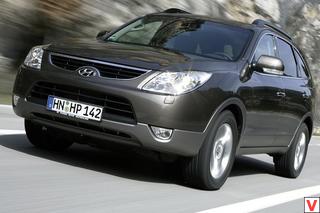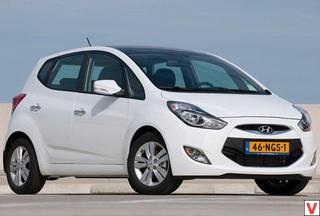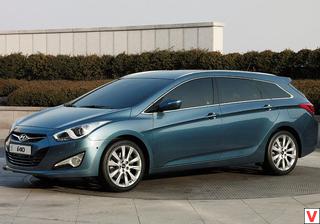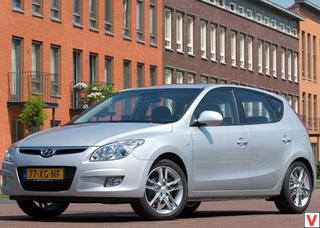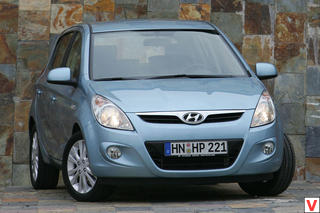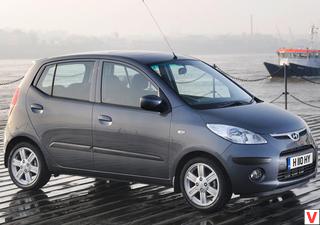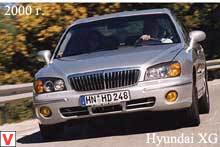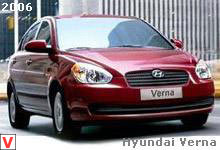
The history of the Sonata began in 1988, when the first generation of this model was introduced. Initially, all Hyundai Sonata came out with 4-cylinder injection engines of 1.8, 2.0 and 2.35 liters (the latter for the North American market) and a capacity from 99 to 117 liters. from. respectively.
At the end of 1989, the Sonata I began installing a powerful 3-liter 146-horsepower Mitsubishi V6 72 engine capable of accelerating the car to 200 km / h. Acceleration to 100 km / h took 10.5 seconds. Three years later, the car was restyled. In 1993, the second generation Sonata. The car turned out much more beautiful and tidier than its predecessor. Comfortable seats have become softer, visibility from the driver’s seat has improved, the suspension has been adjusted.
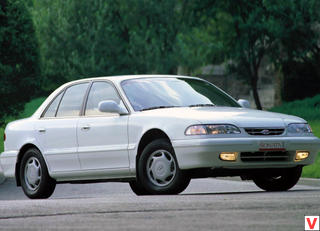
Cars of this year of release can boast an impressive basic set: power steering, airbag for the driver, ABS, cruise control, air conditioning with air conditioning, electric windows and rear-view mirrors, remote control of the trunk and fuel tank lids. On the Sonata of the first generation there was nothing like that. Much more solid and interesting was the design of the front dashboard. By the time Sonata II appeared, the engineers of the Korean company had done a good job of improving the characteristics of the power units. Modernization of engines primarily reflected in the reduced fuel consumption and softer work.
Since 1993, instead of the 117-horsepower 2.35-liter unit, they began installing a 2-liter 139-horsepower in-line "four" Mitsubishi G4 63 with a 2-cylinder cylinder head. In 1996, the third generation Sonata appeared. A distinctive feature of this model is, above all, a high level of comfort for little money. The car has impressive size, original design and spacious interior. The next generation didn’t wait long, two years later, in 1998, at the Turin Auto Show, Hyundai presented the fourth-generation Sonata to the public.
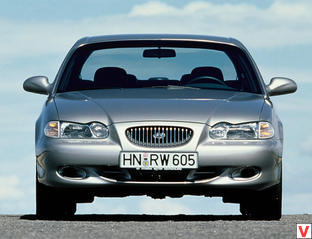
The car still provides decent accommodation both in front and rear. Driver's seat has five mechanical adjustments. The four-spoke steering wheel is height adjustable in a wide range and in the lower position takes up an almost vertical position. The luggage compartment is quite spacious, but there is one disadvantage - the back of the rear seat does not recline, therefore, it is not possible, if necessary, to increase the size of the trunk. Sonata is equipped with a two-liter 140-horsepower engine. The car confidently holds the road at high speeds. It has a good smoothness.
And on small irregularities, and on the waves of asphalt, the suspension reliably isolate the body from the road relief. In 2001, the fifth generation Sonata was shown to the general public. Hyundai experts have subjected the car to dramatic changes.
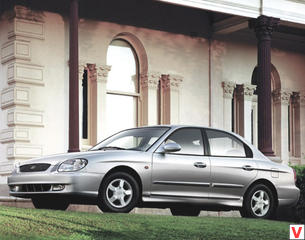
Modern design and the latest technologies allowed to create a competitive car, distinguished by a harmonious and relevant appearance for the automobile market of that time. The car aroused great interest and was in demand among buyers. New headlights and bumper give the image of aristocracy.
Thanks to the finely delineated smooth lines of the parking lights, the model looked attractive from any angle. Side moldings add elegance and increase protection. Dual front headlights have the form of intersecting ovals. And the contours of the grille are underlined chrome trim. The salon, which has noticeably added in dimensions and acquired new parts and materials for finishing, began to look differently. He tried to make the most convenient and practical. The instrument panel and the center console have undergone redevelopment.

The large scales of the speedometer and tachometer are now spaced around the edges of the shield, and the temperature and fuel sensors are grouped in the center, and the bottom line is the liquid crystal line of the on-board computer. On the center console, the "weather" unit and the audio system changed places. The level of security has grown significantly due to: special crushing zones, which are designed to absorb the main impact force, steel beams in the doors, which, if necessary, protect the driver and passengers, in addition to this are hard roof and floor.
The car is also equipped with a stability control system - a great helper for the driver in passing difficult sections of the road. When skidding is indispensable traction control system TCS, working in conjunction with the electronic engine control system and the anti-lock braking system ABS. The basic equipment offered full power, a 68 amp-hour battery, Sachs shock absorbers, disc brakes on all wheels, two airbags with a passenger detector and a computer that calculates the airbag inflation force.
Under the hood or a 2-liter 4-cylinder inline engine producing 131 hp, or 2.7-liter V6 / 178 hp The power unit is made of aluminum alloy, so it is quite light, as well, which is economically important. You can choose from a five-speed manual gearbox and a four-speed automatic H-Matic, which will also allow you to manually shift gears without the participation of clutch mechanisms. The fuel pump and filter are combined into one unit and located inside the fuel tank. Such a system is considered to be the most secure, as it prevents possible leakage and ignition of fuel after an accident. In 2004, the NF model was introduced.
NF is the factory auto index, preserved for Russia, so as not to be confused with its predecessor, Sonata V, which remained in production in Taganrog, NF was also imported from Korea. In most markets, the former name Sonata has been preserved. Hyundai designers managed to create a recognizable and impetuous look.
The elegance of the front end of the body is underlined by a stylish grille with one central crossbar. The image is complemented by resolute lines of the hood and narrow headlights that combine all the lighting engineering in one block. 17-inch wheels, successfully combined with protruding arches, chrome door handles and protective molding integrated into the body panels of the doors form the refined, energetic NF style. Classic proportions harmoniously unite the front and rear parts of the body. The car is 55 mm longer than the Sonata V, and its wheelbase is increased by 30 mm. This resizing allowed the salon to be truly spacious.
The legroom of the front passengers increased by 10 mm, and the rear - by as much as 30 mm, while the space above the heads increased by 22 and 15 mm, respectively. All these millimeters will allow five passengers taller than average to feel at ease in the cabin. The creators of Hyundai NF have thought over the device of the car to the smallest detail, giving the driver and passengers a sense of comfort. Two-color combination of decoration used in the design, emphasizes the modern look of the car.
If you evaluate the interior from an ergonomic point of view, it is definitely convenient. Onboard systems controls are located exactly where the driver expects to find them. Stereo control is located on the steering wheel, the gear lever is convenient and easy to use. Soft plastic on the front. Light skin and carpets look nice and visually make the interior even more.
The steering column, adjustable in two planes, side mirrors with electric drive and heating, three-jet windshield washers will help to get real driving pleasure. But the electric adjustment of the front seats, unfortunately, is missing. Moving longitudinally, vertically and horizontally must be "manually".
Additional amenities include 12V sockets in the front panel and trunk, electric opening of the fuel tank cap, lights for the engine compartment, trunk, cosmetic mirrors and ignition lock. A deep glove box, convenient door pockets, as well as the convenient location of the cup holders will allow the driver and passengers not to worry about placing things in the cabin. Moreover, to increase the volume of the already not small trunk (430 liters), the backs of the rear seat can be folded in parts. To save the driver and passengers from extraneous sounds, the car has side windows of greater thickness. As a result, Hyundai NF has record low noise levels both at idle and in motion.
The previous generation of the car has established itself as one of the safest middle-class cars. Hyundai NF has not lagged behind the ancestor. Through repeated crash tests and calculations of computer simulators, the deformation zones and impact energy absorption trajectories were optimized. A robust body structure designed on a computer is reinforced with stiffening ribs, struts and special side impact protection. In addition to this, the car has a number of passive safety features: front and side airbags with reduced kinetic energy, front and rear curtain airbags.
The front passenger and driver are protected by active head restraints and three-point seat belts, in front with double pretensioners and maximum chest load limiters. By the way, passenger cushions can be deactivated with a special key in the glove compartment of the car. The traffic situation is always under the control of the NF driver: a standard 4-channel anti-lock system (ABS) with electronic brake-force distribution between the axles (EBD). Additionally, brake assist (BA) and course stability (ESP) systems as well as traction control (TCS) systems can be installed.
Under the hood of the car is installed a 4-cylinder petrol engine of 2.4 liter Theta series developed for the NF, which develops 161 hp at its peak. The power unit is equipped with CVVT variable valve timing system, which guarantees decent “pick-up” in a wide range of revolutions. With him, the acceleration of a 1.5-ton sedan to a hundred takes 8.8 seconds - a good indicator for a middle-class car with a hint of representativeness. However, such dynamics can be achieved only by disabling the ESP motion stabilization system and switching to manual gear shifting.
Topping the line of engines is a 3.3-liter 233-horsepower gasoline engine of the Lambda series. This engine is equipped with a new five-speed automatic transmission H-matic, while the 2.4-liter version - a five-speed mechanics or four-speed "automatic". Engine housings are made of aluminum, the gas distribution mechanism with variable phases and (on Lambda) variable geometry intake system is used. With quite good dynamic characteristics, powerful brakes are perfectly combined.
NF slows down quickly, and pedal effort can be easily dispensed. The front suspension retained the scheme from the Sonata, with double wishbones spaced apart in height, but significantly changed, and the combined lower arms received lighter (aluminum) end pieces. Double-lever rear suspension gave way to multi-link with the effect of the steering.
As an option, offer Active Geometry Control Suspension AGCS - a system of active geometry control. In turning, electric drives change the toe-in of the rear wheels - from negative at low speeds to significant positive at high. In the first case, to reduce the turning radius, in the second - to reduce lead and better stability. In 2008, the model has undergone a restyling.
The grille has become larger and more elegant, updated bumpers and optics. Inside the changes were even greater. Instead of the old two-story console - new. The ashtray and cigarette lighter are hidden under the lid, the buttons are logically grouped. A deep compartment for small things appeared right on the center console.
Green lights gave way to blue. Even the steering wheel has been updated and made more convenient. The line of units varies depending on the market for the model. Of the four existing engines, two became available to Russians: the upgraded two-liter Theta produces 152 hp.
against 145 hp the predecessor and the 2.4-liter Theta II 174 hp Overboard remained turbo diesel CRDi 2.0 and 3.3-liter V6. The base engine is paired with a 5-speed manual transmission or a 4-range automatic. The motor is more powerful equipped with automatic transmission on 5 ranges. The sixth generation Hyundai Sonata was introduced in 2010. This generation comes with the YF designation and is offered exclusively in a sedan.
For some countries of the world, the model name may sound like i45. The car was built on a completely new platform created for the production of models Sonata YF / i45, i40 (wagon, sedan). Compared with the previous generation Sonata YF has become much more expressive. The exterior is designed in the new corporate spirit of Hyundai, which echoes another new product - the ix 35 crossover, and other models of the company in recent years. External dimensions of the car have undergone minimal changes.
The length of the car - 4820 mm, width - 1835 mm, height - 1470 mm. The 2010 model is slightly longer than its predecessor, but at the same time slightly lower. The wheelbase is 65 mm more - 2795 mm. That is, the back of the car has become even more spacious than before.
Ground clearance of a sedan varies from 160 mm to 140 mm (in the top trim levels). The mass of the car is about one and a half tons. The fuel tank has a volume of 70 liters. Sonata 2010 has become about 100 kg lighter than the previous Hyundai Sonata NF model due to the extensive use of aluminum. The drag coefficient is 0.29. Since the car is no longer equipped with V6 engines, it has become possible to reduce the weight of the front auxiliary frame.
All these measures contributed to improving the efficiency of the car. The new design is distinguished by elegant forms, a dynamic silhouette, a sloping roof, spectacular vyshtampovki on tanks and on the hood. The grille acquired the trapezoid lines of the entire Hyundai family, which made the car more recognizable. The headlights are doubled in a quaint, but modern style of combined figures.
Smooth forms of parking lights delight first visually, and then remind of functionality. The interior, with its abundance of curved lines, pseudo-chrome and lacquered surfaces, looks fresh and avant-garde. The bottom and top of the interior of the Hyundai Sonata YF are different materials and shades. The upper part of the cabin is trimmed with softer and darker plastic, and the lower, respectively, vice versa. Beneficially stand out insert. The design of the torpedo and steering wheel in the Hyundai Sonata YF is in many ways similar to the ix35. Heated seats, as well as rear-view mirrors.
The front seats are more comfortable profiled, lateral support is modestly unobtrusive, but tangible. The steering column can be adjusted both on the angle of inclination and on the departure, which makes it easy to choose the most comfortable location of the steering wheel, pedals and driver's seat. Noise isolation, as it should be for this class of car - at altitude.
The back sofa is comfortable and spacious there is plenty of space. Ergonomics and quality of finishing materials at the highest level. Inside there are enough containers for trifles and cupholders, and all this is at hand. The musical accompaniment is provided by an MP3 audio system with six speakers, which is already offered in the basic configuration of the Sonata YF. It is possible to remotely open the fuel cap and trunk. For the most expensive configurations offered panoramic panoramic roof with a large sliding hatch. In the fields of the dials you can see not only the data of the coolant temperature and the level of available fuel, but also other important information.
According to the standard of today, provided climate control and on-board computer. In the settings of the onboard computer there is an ECO mode, by activating which Sonata, according to the regulations, saves fuel. And most importantly, Eco Drive mode allows you to reduce air pollution. Standard equipment Hyundai Sonata YF has reached a new level.
Already in the base car has an anti-lock brakes and disc brakes on all wheels. Passenger protection is provided by frontal and side airbags. And shock absorbers with variable stiffness (ASD) provide maximum control and comfort on any type of road surface. All versions are equipped with a system of stabilization of Vehicle Dynamic Control, Hill-start Assist Control will help to move up the hill, Brake Assist will make emergency braking safe and effective. Among the options there is also a very relevant recently panoramic glass roof consisting of three segments, a parking assistance system, etc.
In Russia, the Hyundai Sonata is offered with two petrol engines of the Theta II family - 2-liter 150-horsepower (198 Nm) and 2.4-liter 178-horsepower (228 Nm) units.
